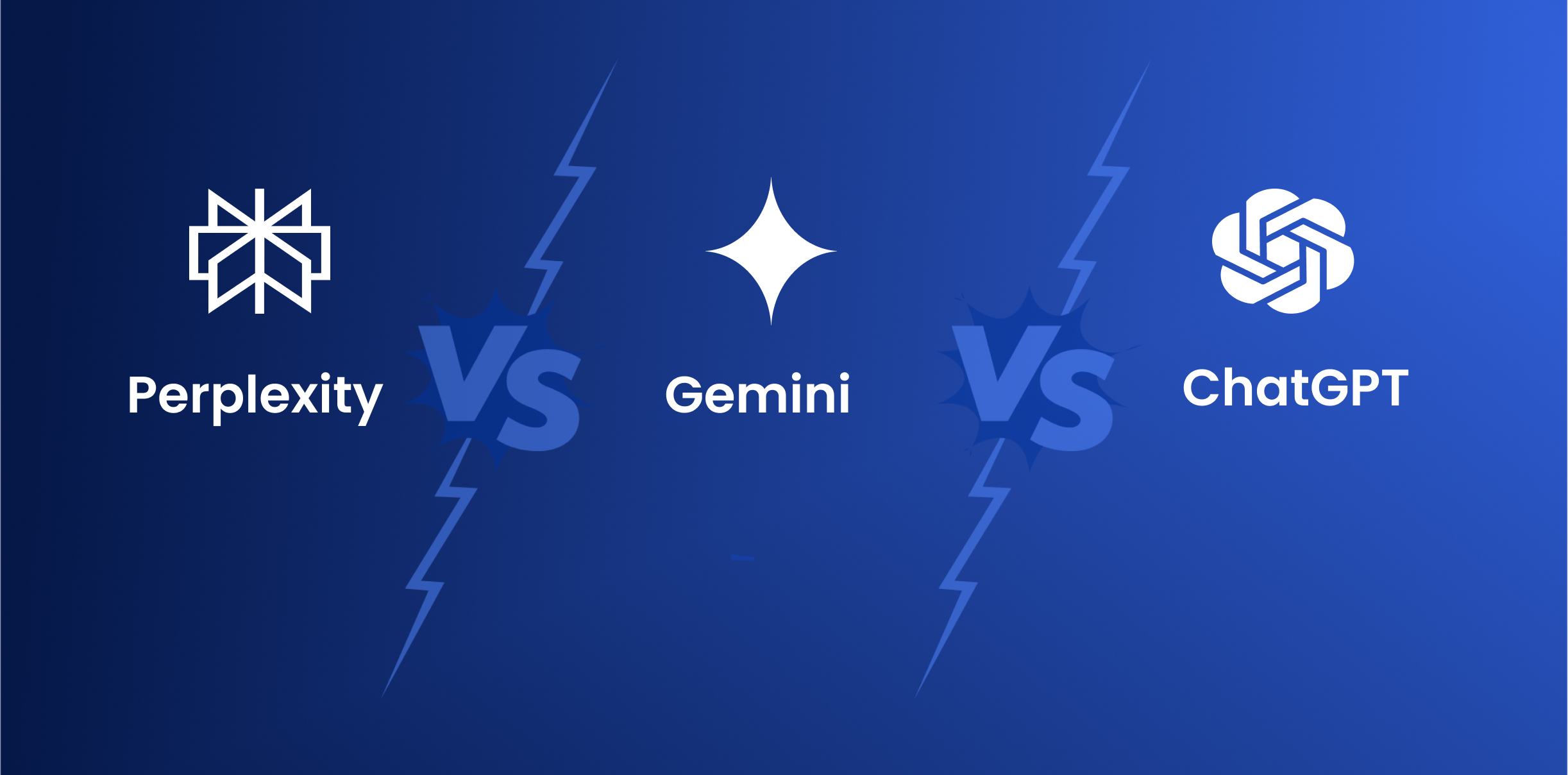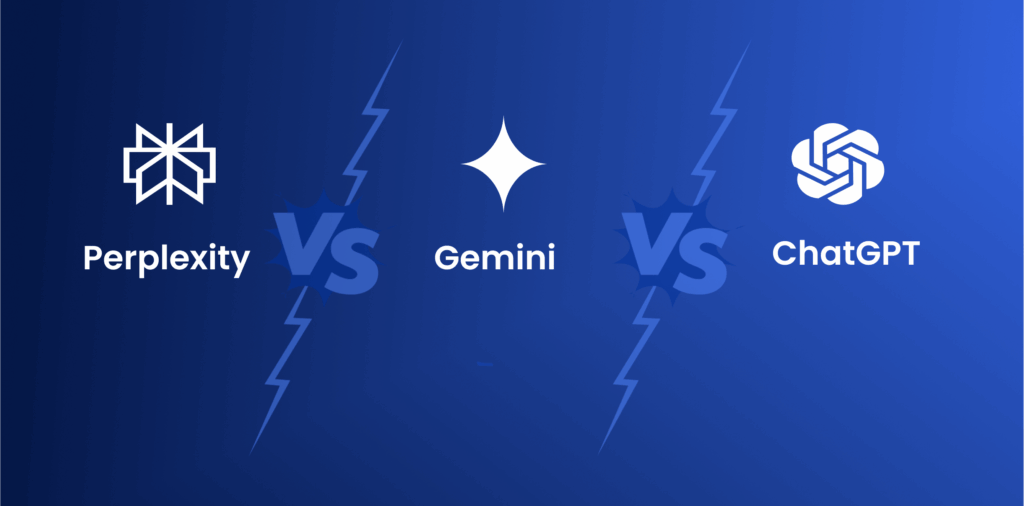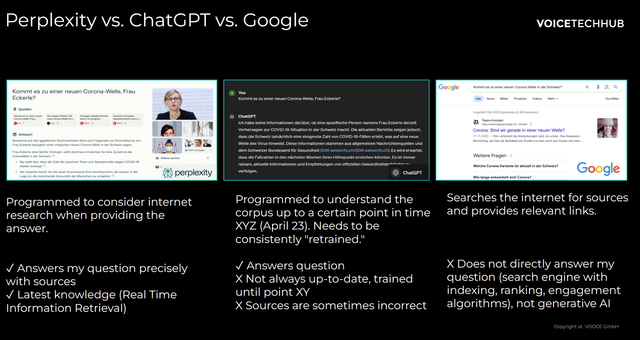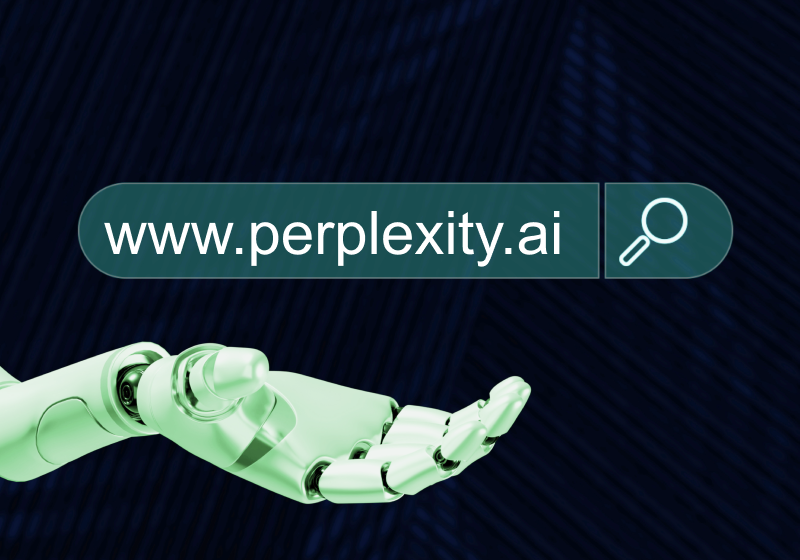Hello, AskByteWise readers! Noah Evans here, your guide through the ever-evolving world of technology. Today, we’re diving into a fascinating new player in the information retrieval landscape: Perplexity AI. If you’ve ever wondered what is Perplexity AI and how is it different from Google?, you’re in the right place. We’re on the cusp of a revolution in how we find information online, and understanding these new tools is key to staying ahead. This article will demystify Perplexity AI, break down its core functionality, and provide a clear, friendly comparison with the search engine giant we all know and use daily, ensuring you know exactly when to leverage each for your informational needs.
What is Perplexity AI and Why Should You Care?
Imagine a world where instead of sifting through dozens of search results, you get a direct, well-researched answer to your question, complete with verifiable sources. That’s the promise of Perplexity AI. It’s not just another search engine; it’s what’s often called an “answer engine” or a “conversational AI search engine.”
Think of it this way: When you ask Google a question, it typically acts like a super-efficient librarian who hands you a giant stack of books (web links) that might contain the answer. You then have to flip through those books yourself to find what you’re looking for. Perplexity AI, on the other hand, is like a highly intelligent research assistant. You ask it a question, and it goes, finds the relevant information across the web, synthesizes it into a concise answer, and then shows you exactly which pages it used to form that answer. It saves you the legwork of clicking through multiple links and piecing together information.
Why should you care? Because in our fast-paced world, time is precious. Perplexity AI aims to drastically cut down the time you spend researching by providing immediate, reliable summaries backed by transparent sources. This isn’t just a novelty; it’s a significant shift in how we interact with information online, making it incredibly valuable for students, researchers, small business owners, and anyone looking to quickly grasp complex topics.
The Brain Behind Perplexity: How it Works (Simply Put)
At its heart, Perplexity AI leverages powerful Artificial Intelligence, specifically a type of AI called a Large Language Model (LLM). You might have heard of these with tools like ChatGPT. Think of an LLM as a highly sophisticated digital brain that has “read” an enormous amount of text data from the internet. This allows it to understand context, generate human-like text, and even follow complex instructions.
However, where Perplexity AI truly differentiates itself is in its approach to information retrieval, often referred to as Retrieval-Augmented Generation (RAG). Here’s a simplified breakdown:
- Understanding Your Query: When you type a question into Perplexity AI, its LLM first works to understand the full intent and context of your query. It doesn’t just look for keywords; it tries to grasp the meaning behind your words.
- Searching the Web (in Real-Time): Unlike some LLMs that generate answers solely from their pre-trained data (which can lead to “hallucinations” or made-up facts), Perplexity AI actively searches the live internet in real-time. It scours a vast number of sources, much like a traditional search engine.
- Synthesizing and Generating: After finding relevant information, the LLM then synthesizes this data. It pulls out key facts, identifies common themes, and condenses the information into a coherent, easy-to-understand answer.
- Citing Its Sources: This is where Perplexity AI truly shines. For every piece of information it provides, it also lists the direct web pages (sources) it used. This transparency allows you to easily fact-check, delve deeper into a specific point, and verify the information’s credibility. It’s like having your research assistant not just tell you the answer, but also hand you the books it used.
This RAG approach means Perplexity AI isn’t just guessing; it’s grounding its answers in current, verifiable information from the web. This greatly reduces the chances of it “making things up” compared to other generative AI tools that might rely purely on their internal, potentially outdated knowledge base.
Perplexity AI vs. Google: A Head-to-Head Battle for Information
This is the core question for many users: What is Perplexity AI and How Is It Different from Google? While both aim to help you find information, their methods, outputs, and ideal use cases are fundamentally different. Let’s pit them against each other to see where each truly excels.
Google: The Veteran Search Giant
For over two decades, Google has been the undisputed king of web search. Its model is built on indexing the vast expanse of the internet and then ranking pages based on complex algorithms that consider relevance, authority, links, user engagement, and many other factors.
- How Google Works: When you type a query into Google, its sophisticated algorithms quickly scan its massive index (a colossal library of web pages). It then presents you with a Search Engine Results Page (SERP), which is a list of links to web pages that it deems most relevant to your query. These often include organic results, images, videos, news, shopping links, and advertisements.
- Output: A list of links to various web pages, with snippets of text. You are then responsible for clicking on these links, navigating to different sites, and sifting through the content to find your answer.
- Strengths:
- Vast Index: Google has indexed more of the web than any other engine, making it unparalleled for finding obscure pages or very specific bits of information.
- Comprehensive Coverage: Excellent for finding images, videos, news, local businesses (Google Maps integration), shopping results, and real-time trends.
- Website Discovery: If your goal is to find websites to browse, research, or shop from, Google is still the best.
- Familiarity and Trust: Decades of use have built a strong sense of familiarity and trust for many users.
- Weaknesses:
- Information Overload: For complex questions, you might get thousands of links, requiring significant effort to synthesize an answer.
- Sifting Required: You often have to click through multiple pages to find the exact information you need.
- Ad-Heavy: SERPs can be cluttered with ads, sometimes pushing organic results further down.
- Less Direct Answers: While Google has “featured snippets,” these are not always comprehensive or directly sourced in the same way as Perplexity.
Perplexity AI: The New-Age Answer Engine
Perplexity AI represents a significant evolution, focusing on providing direct, synthesized answers rather than just links. It’s built for conversational interaction and immediate summarization.
- How Perplexity Works: As discussed, Perplexity AI uses a Large Language Model combined with real-time web search (RAG). It actively searches the internet, understands your question, summarizes the findings, and presents a direct answer, complete with footnotes to its sources. It then offers follow-up questions to deepen your research.
- Output: A concise, paragraph-form answer to your question, accompanied by numbered sources that link directly to the web pages used. It also provides “Related Questions” and a “Discover” feed for further exploration.
- Strengths:
- Direct Answers: Get straight to the point without needing to click through multiple links.
- Transparency (Citations): Every piece of information is attributed to its original web source, fostering trust and enabling easy fact-checking.
- Summarization & Synthesis: Excellent for quickly grasping the essence of a topic or for creating an outline of key facts.
- Conversational Interaction: You can ask follow-up questions, refining your query and deepening your understanding in a natural dialogue.
- Topic Exploration: Features like “Related Questions” and “Discover” are fantastic for exploring a topic from multiple angles.
- Reduced Bias (Potentially): By sourcing multiple pages and summarizing, it can sometimes present a more balanced view than a single highly-ranked article.
- Weaknesses:
- Still Evolving: While powerful, it’s a newer technology. Occasional inaccuracies or “hallucinations” can still occur (though less frequently than pure LLMs). Always verify critical information.
- Not Ideal for Browsing/Discovery: If you want to stumble upon new websites, products, or services without a specific question, Google is better.
- Limited for Visual/Local Search: Doesn’t yet have the robust image, video, or local business integration that Google offers.
- Ad-Free (Currently): While a strength, it’s also a business model challenge. Perplexity Pro offers enhanced features for a fee.
Key Differences at a Glance
| Feature | Perplexity AI | |
|---|---|---|
| Primary Goal | Index the web, provide relevant links | Answer questions directly, synthesize info |
| Output | Search Engine Results Page (SERP) – list of links | Direct, summarized answer + sources |
| Transparency | Implied (rankings/authority) | Explicit (numbered footnotes to sources) |
| Interaction Style | Keyword-driven queries | Conversational, natural language |
| Best For | Website discovery, shopping, local search, image/video search, specific URLs | Research, summarization, direct answers, learning new topics, idea generation |
| Monetization | Advertising | Freemium model (Pro version for features) |
| Focus | Broad web navigation & discovery | Deep dive into specific questions & topics |
When to Use Perplexity AI (and When to Stick with Google)
Understanding the distinctions makes it clear that Perplexity AI isn’t here to replace Google entirely, but rather to offer a powerful alternative for specific needs. It’s about choosing the right tool for the job.
Use Perplexity AI When:
- You need a direct answer to a specific question: “What are the long-term effects of climate change on ocean ecosystems?”
- You’re researching a new topic and need a quick overview: “Summarize the history of quantum computing for a beginner.”
- You need to fact-check information quickly: “Is it true that honey never spoils?” (It will give you the answer and the scientific sources).
- You want to understand a complex concept simply: “Explain blockchain technology using an analogy.”
- You’re generating ideas or outlines for an essay, presentation, or report: “Give me an outline for an article on renewable energy sources.”
- You want to explore a topic deeply through follow-up questions: Start with a broad question and then iteratively refine your understanding.
- You value transparency and want to see the sources immediately: Crucial for academic work, professional research, or just building trust.
Stick with Google When:
- You’re looking for specific websites to visit: “Facebook login page,” “Amazon.com,” “AskByteWise.com.”
- You want to shop for products or compare prices: “Best noise-canceling headphones,” “Deals on smartwatches.”
- You need to find local businesses, restaurants, or directions: “Coffee shops near me,” “Directions to Eiffel Tower.”
- You’re searching for images, videos, or specific file types: “Cute cat videos,” “PNG images of vector icons.”
- You’re troubleshooting a technical issue with an error code: “Windows error 0x80070005 fix.”
- You want to discover a wide range of content on a broad topic without a specific question in mind: “Inspiration for minimalist home decor.”
- You need up-to-the-minute news on breaking events: While Perplexity can summarize, Google’s news section is often faster for real-time updates.
Advanced Features and Tips for Mastering Perplexity AI
To truly leverage Perplexity AI’s power, it’s worth exploring some of its advanced features:
- Focus Mode: This is a game-changer for targeted research. Perplexity allows you to narrow down its search to specific categories:
- Academic: Prioritizes scholarly articles and research papers.
- Wolfram|Alpha: Integrates computational knowledge for factual data, math, science, and statistics.
- YouTube: Searches and summarizes video content.
- Reddit: Gathers opinions and discussions from Reddit communities.
- Writing: Helps with generating text, outlines, or creative content.
- Perplexity Pro: Offers even more focused modes and enhanced capabilities.
Pro Tip: If you’re researching for a school project, always use the Academic Focus Mode. If you want to gauge public opinion on a new gadget, try the Reddit mode. These focused searches significantly improve the relevance and quality of the answers.
- Collections: You can create “Collections” to save and organize your searches, making it easy to return to previous research topics and build upon them. This is invaluable for ongoing projects.
- Copilot: A premium feature, Copilot provides a more interactive and guided search experience. It asks clarifying questions to help you refine your query, ensuring it understands exactly what you’re looking for before generating an answer. It’s like having an AI interview you to get the best results.
- Related Questions & Sources: After receiving an answer, always look at the “Related Questions” for avenues to deepen your understanding. The “Sources” section is your direct link to verification and further reading.
The Future of Search: A Hybrid Approach?
The emergence of Perplexity AI and similar AI-powered answer engines signals a significant shift, but it doesn’t necessarily mean the end of traditional search. Instead, we’re likely moving towards a hybrid approach to information access.
Google itself is integrating more AI into its search experience (e.g., its Search Generative Experience, or SGE, which is currently experimental). This suggests that the lines between “search engine” and “answer engine” will continue to blur. Users will increasingly expect direct answers, summarization, and conversational capabilities from their information tools.
Ultimately, the goal remains the same: to get you the information you need, as quickly and accurately as possible. Tools like Perplexity AI empower us with new ways to achieve this, reducing the “information overload” that has plagued web search for years. The future isn’t about choosing one over the other; it’s about intelligently using both to maximize your efficiency and understanding.
Conclusion: Embracing the Evolution of Information Access
So, what is Perplexity AI and how is it different from Google? It’s a game-changer for direct answers, research, and summarization, offering transparency through source citations – a stark contrast to Google’s link-centric approach. Perplexity AI is not just a tool; it’s a new way of thinking about how we interact with the vast ocean of online data. It represents a significant step forward in making complex information more accessible and digestible, truly embodying AskByteWise.com’s mission: “Making Complex Tech Simple.”
By understanding the unique strengths of both Perplexity AI and Google, you can become a more efficient and effective information seeker. Experiment with Perplexity for your next research task or when you need a quick, sourced answer. You might be surprised at how much time it saves you. Embrace this evolution, and empower yourself with the best tools for navigating the digital age.
Frequently Asked Questions (FAQ)
Is Perplexity AI free to use?
Yes, Perplexity AI offers a robust free tier that allows you to perform numerous searches, use different Focus Modes, and access its core features. There is also a “Perplexity Pro” subscription that unlocks additional features like more Copilot queries, more advanced AI models, and unlimited “Focus” modes.
Can Perplexity AI replace Google entirely?
No, not entirely. While Perplexity AI excels at providing direct answers and summarizing information, Google remains superior for tasks like finding specific websites, shopping, local search (maps, businesses), image/video search, and real-time breaking news. They are complementary tools, each with its own strengths.
How accurate are Perplexity AI’s answers?
Perplexity AI is generally very accurate because it grounds its answers in real-time web searches and provides direct sources. This “Retrieval-Augmented Generation” (RAG) approach significantly reduces the chances of “hallucinations” (AI making up facts) compared to pure generative AI models. However, like any AI or human researcher, it’s not infallible. For critical information (medical, financial, legal), always double-check the original sources and consult human experts.
Does Perplexity AI collect my data?
Like most online services, Perplexity AI does collect some user data to operate its service, improve its models, and personalize the user experience. You can review their privacy policy for detailed information. Generally, they emphasize user privacy and data security. You often have options to control your data through account settings.
What are “Copilot” and “Focus Modes”?
Focus Modes allow you to narrow down Perplexity AI’s search to specific categories (e.g., Academic, YouTube, Reddit, Wolfram|Alpha) to get more relevant and specialized answers. Copilot is a premium feature that enhances the conversational experience by asking clarifying questions to better understand your query before generating an answer, leading to more precise results.
See more: What is Perplexity AI and How Is It Different from Google?.
Discover: AskByteWise.



